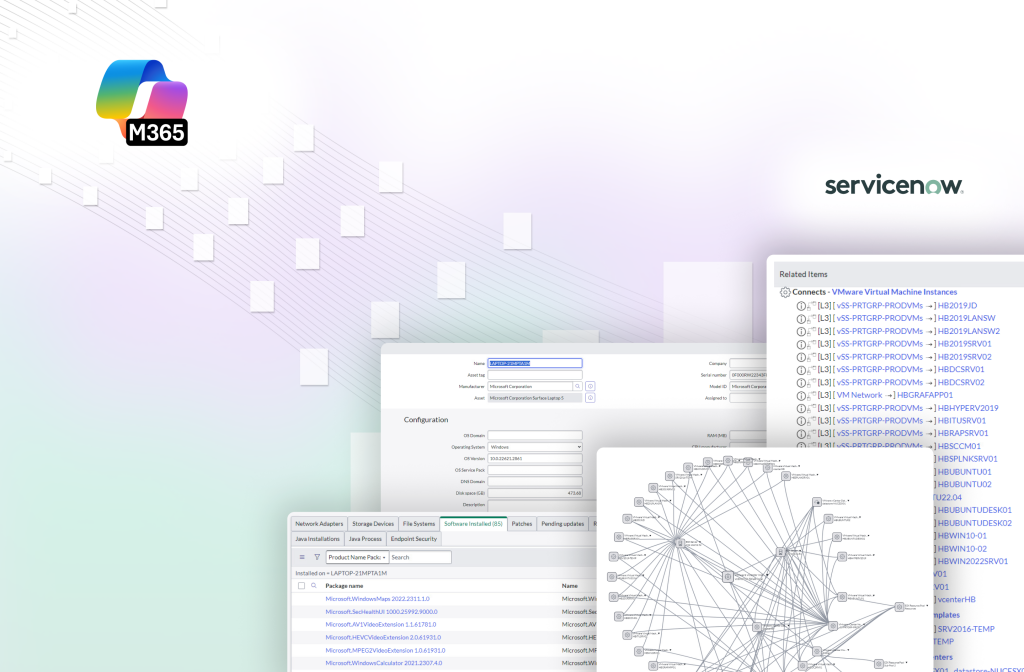Microsoft 365 (M365) is a comprehensive platform providing a wide range of services used by enterprises across the globe. Microsoft Entra ID underpins M365 with authentication and authorization information which can be leveraged to enhance your ITSM platform and associated business processes.
The CI Sync Microsoft 365 connector reads multiple object types to create a combination of records and relationships in your CMDB and other related tables in within ServiceNow. This enables novel use cases to be leveraged by your organization to improve visibility and management of MS Team (SharePoint) sites as an example.
The CI Sync M365 connector can take advantage of any data available through the Microsoft 365 and Entra ID APIs. Syncfish are keen for more customer use cases to expand the connector and the benefits it can provide to your ServiceNow platform.

























